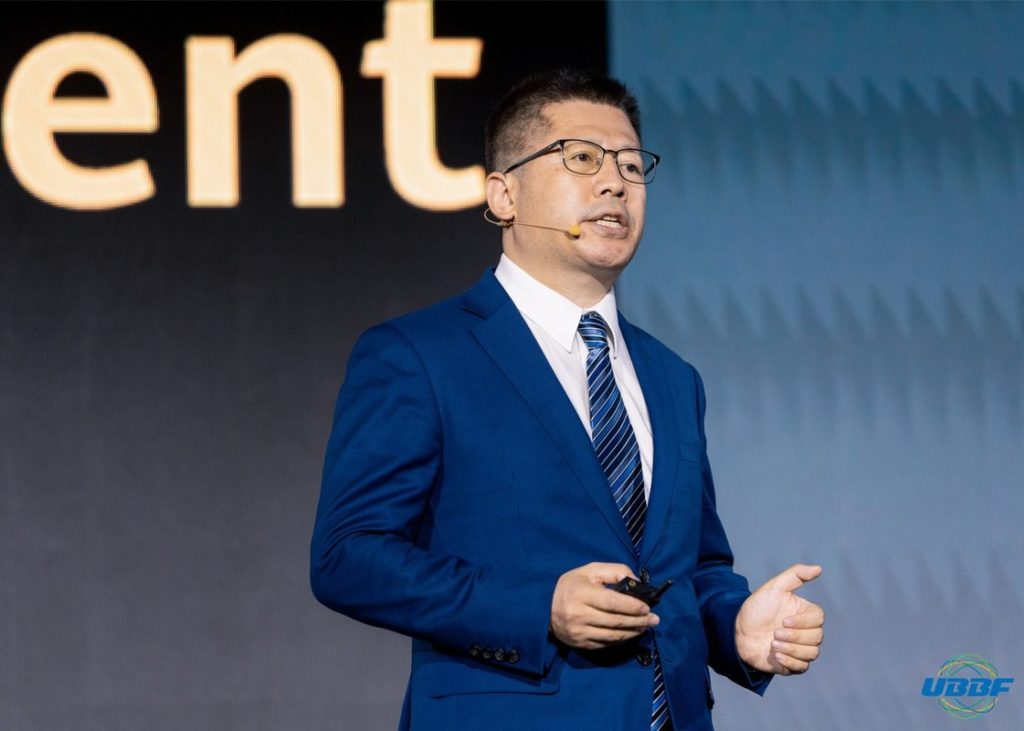Today, the 7th Ultra-Broadband Forum (UBBF2021) is opened in Dubai. In the agenda of the first day, Bill Wang, Vice President of Huawei’s Optical Product Line, delivered a keynote speech. He pointed out that in addition to benefits in energy saving and rate improvement, all-optical target networks also accelerate the digital transformation of various industries, bring premium service experience, and generate higher business values.
Global operators continuously increase investment in optical fibers, improve broadband quality, and develop services such as FTTR and OTN premium private lines to increase the revenue from fixed networks. As a fundamental element of green and smart cities, all-optical target networks have gradually become an industry consensus.
However, in the process of building all-optical target networks for smart cities, operators still face difficulties such as high costs, slow service provisioning, and difficult management in FTTH ODN construction. In addition, device deployment, network evolution, and new service development also represent pressing concerns.
Bill Wang, Vice President of Huawei’s Optical Product Line, said: “To solve these problems, Huawei has released the DQ ODN and Edge OTN series products. These products have been designed to help operators quickly build all-optical target networks that are visible and manageable from end to end, greatly reduce operator O&M costs, and provide a high-speed entrance to the digital world for various industries and households. They can help operators expand the enterprise market, improve home broadband experience, reduce costs, and increase revenue.
DQ ODN is a solution that implements plug-and-play, scanning for resource visualization, and one-click O&M through pre-connection, intelligent image recognition, and optical iris technologies. With this solution, operators can quickly build an all-optical target network that is visible and manageable from end to end. Specifically, the solution has the following features:
– The pre-connection technology with low insertion loss is used to adapt to multiple outdoor and indoor network solutions. It supports all-scenario network construction without splicing, greatly reducing the ODN construction difficulty, improving the construction efficiency by 70%, reducing the TTM by 30%, and reducing the TCO by 15%.
– Intelligent image recognition and the industry’s first optical iris technology are used to automatically identify key feature changes of optical signals after they pass through ODN links, and perform big data modeling and analysis on the network management platform. In this way, the ODN link topology and resources can be accurately managed in a visualized manner, and the long-term resource accuracy can reach 100%. In addition, this solution can work with Huawei’s service provisioning and fault locating platform to implement fast service provisioning and accurate fault locating, greatly reducing O&M costs for operators.
Edge OTN is a full-scenario and full-service integrated bearer platform. It supports indoor and outdoor cabinets and OLT/BBU co-cabinet deployment, adapts to installation in all cabinets, and meets the requirements of high-speed energy-saving transmission at integrated access sites.
– Blade-OXC based on LCoS optical switching enhancement supports one slot for one optical direction, reducing space usage by 75%. The products are compact and flexible, and can be deployed in various scenarios.
– Thanks to the silicon photonics technology, the size and power consumption are reduced by more than 60%. In addition, the capacity is increased by five times.
– The Liquid OTN technology is used to support OSU slicing, 2M to 100G service access, on-demand hitless bandwidth adjustment, and ultra-low latency, providing premium connections for various industries.
Highly integrated edge OTN devices can be easily co-sited with OLTs, extending premium optical connections to each organization. Large enterprises can use the OTN P2P private line solution to achieve premium E2E connections. For a large number of small- and medium-sized enterprises (SMEs), Huawei launches the innovative OTN P2MP solution to help them quickly improve connection quality. The solution also helps operators expand the private line market space.
In his speech, Bill Wang also said that all-optical networks can be further applied to industries to promote digital transformation and build a secure, efficient, and experience-guaranteed all-optical base for smart cities. Optical fibers can be extended to factories and machines. All-optical networks can provide premium connections with anti-interference, high bandwidth, and low latency. When used in hospitals, optical networks can ensure massive data transmission to support telemedicine.
Finally, Bill Wang said that all-optical networks are the main contributor to the growth of home broadband and enterprise service revenue. All-optical networks will further enrich our life and work and promote digital transformation. Ubiquitous optical connections will bring infinite possibilities.
Photo – https://mma.prnewswire.com/media/1664425/image1.jpg
Caption – Bill Wang, Vice President of Huawei Optical Product Line, delivering a keynote speech
